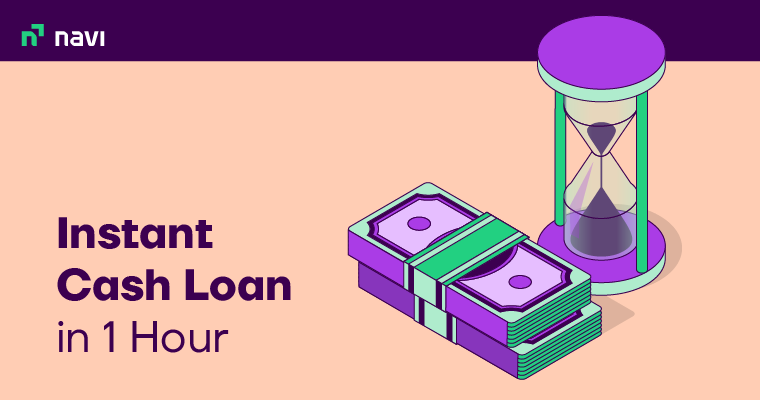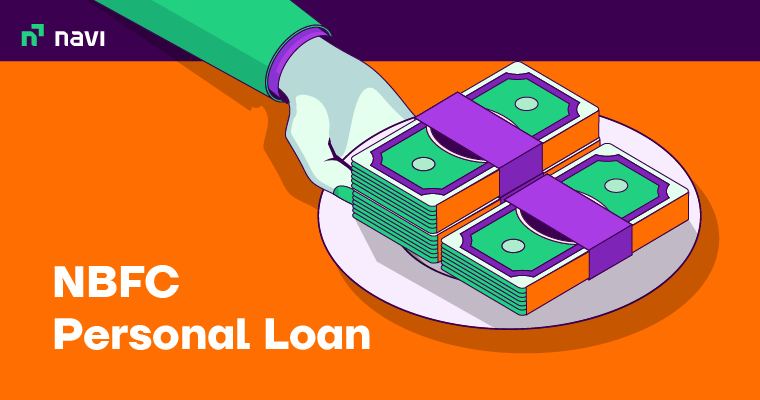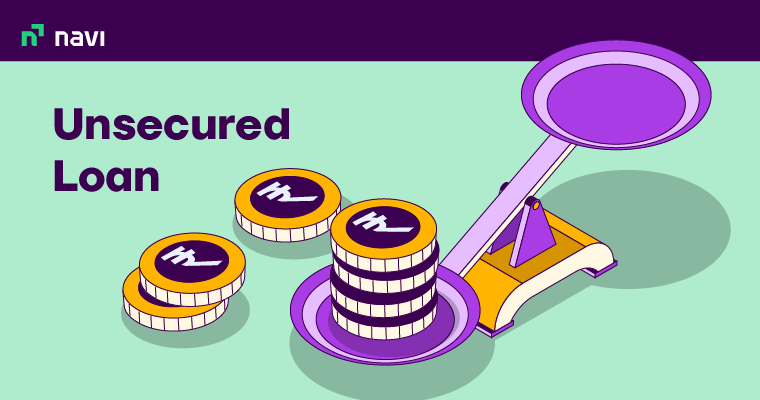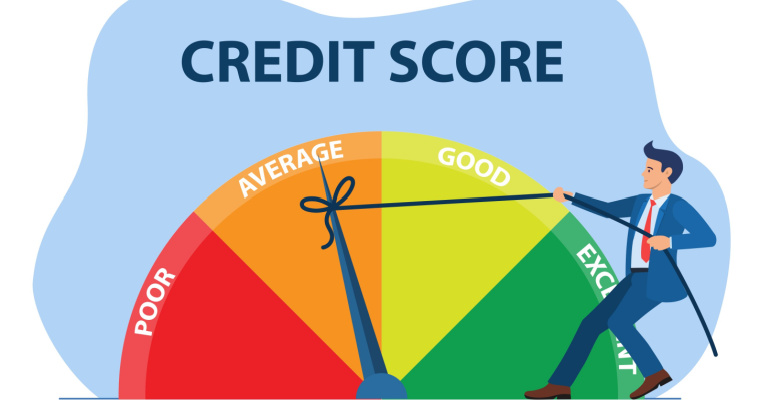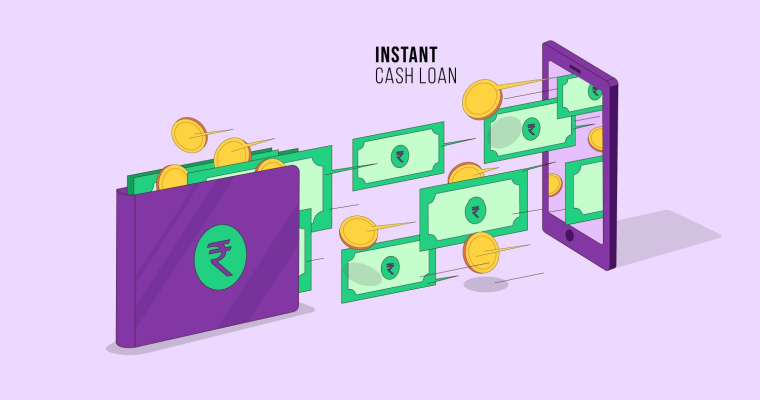Peer to Peer (P2P) Lending – Features, Working, Benefits and How to Apply?
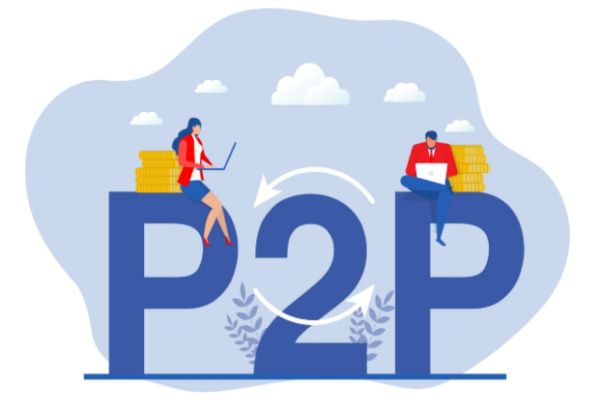
Peer-to-peer lending is an alternative financing system that enables borrowers to get loans from other individuals without the involvement of a financial institution. P2P lending is also known as social lending as the transaction between lenders and borrowers takes place via various online platforms.
In peer-to-peer (P2P) lending the lenders directly send the loan to the borrowers. Lenders gain comparatively better returns than investment and savings products provided by banks. And borrowers with lower credit scores can lend at low-interest rates.
This blog explains P2P lending in detail – from its features and benefits to how to get a loan through a P2P lending platform. Keep reading!
How Does Peer-to-Peer Loan Work?
The peer-to-peer lending process is hassle-free as it doesn’t comprise traditional methods like borrowing from banks, NBFCs, etc. The following steps will help you understand how P2P lending works:
1. Prequalification
Read the terms and conditions to check whether you are eligible for the loan or not. On successful application, the lender will provide a document comprising loan guidelines alongside an Annual Percentage Rate (APR) and other associated fees, etc.
2. Application
If you like the lending terms and conditions and interest rates, you may fill out the application form. The lender will check your credit score.
3. Approval
Wait for a few days to get loan approval from the lender.
4. Review
If your loan gets approved, various lenders will review your loan application.
5. Funds Transfer
Once your loan request gets enough investors, the amount will be electronically transferred to your account.
6. Loan Repayment
Based on the loan repayment terms, you will make monthly payments to the investors.
Also Read
Features of P2P Lending
Listed below are important features of P2P lending:
- Every P2P lending platform falls under the purview of the Reserve Bank of India (RBI) in our country
- The various stakeholders in a P2P lending system can take part in transactions only after a proper assessment is conducted. This ensures that loans are given to credible borrowers
- The entire P2P lending process takes place via online platforms. In other words, people register themselves on the chosen P2P lending platform to connect with borrowers or investors
- People can avail both secured and unsecured loans through P2P lending
- People do not apply for quick sanction of loans on P2P lending platforms. If there is any feature at all for quick application, it is sanctioned only if it is backed by expensive collateral.
Benefits of Peer-to-Peer Lending
Here are the benefits of peer-to-peer lending:
- It offers credit access to those people who cannot get loans from banks and other traditional financial institutions
- No end-usage restrictions
- P2P borrowers enjoy sufficient cost benefits compared to the terms provided by financial institutions
- Receiving a loan from P2P lenders is much faster and easier. Just register at their website and apply. You will stay informed with every update
- The formalities and paperwork in the P2P lending system are much simpler and more convenient than in banks or financial institutions
- In the case of peer-to-peer lending, the lenders have complete freedom in offering loans at their discretion
- P2P lending offers higher returns to the investors alongside a low-interest rate
- Smaller amounts could be borrowed unlike banks, which have a minimum loan amount
How to Get a Loan Through Peer-to-Peer Lending System?
Here are the steps to get a loan through a p2p lending system:
- Step 1
Visit the official website of a P2P lender that offers services in your region and register yourself.
- Step 2
You may find various Peer to peer lending apps that will connect you directly to the lender.
- Step 3
The website will connect you with the potential lender who will lend you the loan amount.
- Step 4
Before signing the agreement with the lender, make sure that you pass every verification stage including personal information, background, employment position and credit history.
- Step 5
The lenders will be checking your financial background and your reasons behind opting for the loan.
- Step 6
After getting confirmation, the lender will provide you with several options to select from. You have to decide the one that best suits your needs.
Eligibility Criteria for Peer-to-Peer Loan Borrowers
Anyone facing a financial crisis or in desperate need of money can borrow credit from Peer to peer lending system. Although their portals are open to everyone, they mainly draw individuals with low incomes or poor CIBIL scores for loans. But everything depends on the lender’s final decision.
Pros and Cons of P2P Lending
Discussed below are some of the important pros and cons of P2P lending:
Pros
- A good return on investment (ROI) is a major benefit for lenders on P2P platforms. If an investor has substantial cash and a good risk-taking capacity, P2P lending can be a good source of passive income.
- Borrowers get the benefit of interest rates lower than what they would have been offered by traditional lenders such as banks.
- Sometimes, borrowers can receive a loan tailored to their needs through the P2P lending process.
- Another benefit is that investors can choose the risk level they are comfortable with. In other words, investors can choose the borrower based on his or her credit profile.
- Peer-to-peer lending is a lucrative alternative investment option that helps to diversify one’s overall portfolio.
- The entire process is carried out online. It is a quicker and more convenient process for all parties involved.
Cons
- P2P loans are prone to credit risk. Often, borrowers, who have a low CIBIL score and fail to get loans sanctioned by banks, apply for credit at P2P lending platforms. As an investor, you need to be aware of the risks of a borrower defaulting on payments.
- Another major disadvantage is that lenders do not receive any financial protection if the borrower defaults.
- Certain lenders and borrowers may not be able to access credit through P2P lending because of region-specific legislation.
Best P2P Lending Platforms in India
| P2P Platform’s Name | Rate of Interest (per annum) | Amount of Loan | Repayment Period | Registration Fees |
| Faircent | Starts from 9.99% | Rs.10,000 to Rs.5 lakh | 6 months to 3 years | Rs.500 |
| Lendbox | Starts from 12% | Rs.25,000 to Rs.5 lakh | 6 months to 2 years | Rs.500 |
| i-lend | Starts from 15% | Rs.25,000 to Rs.5 lakh | 6 months to 3 years | |
| LenDenClub | Starts from 6.5% | Rs.25,000 to Rs.5 lakh | 3 months to 2 years | Rs.750 |
| i2ifunding | Starts from 12% | Maximum of Rs.10 lakh | 3 months to 3 years | Rs.118 (including 18% GST) |
| OMLP2P | Starts from 10.99% | Rs.25,000 to Rs.10 lakh | 3 months to 3 years | Rs.100 |
Processing Fees Charged by the Peer-to-Peer Lenders
| P2P Platform’s Name | Processing Fees |
| Faircent | 2.5% to 8.5% depending upon loan amount, rate of interest and time interval |
| OLMP2P | 1% to 10% of the amount sanctioned depending upon loan tenancy |
| i-lend | 4% of the loan amount |
| LenDenClub | Rs.400 (including GST) for loan amounts up to Rs.100004% for loan amounts greater than Rs.10000 (subject to a minimum of Rs.2000) |
| Lendbox | 2% to 6% depending on the loan amount |
| i2iFunding | 3% to 6% for salaried individuals 4% to 8% for self-employed individuals |
Key Points to Check as a Borrower
Here are the key points to keep in mind as a borrower:
- Being connected via online peer-to-peer lending platforms, it is essential to verify the reliability of the website before going making transactions.
- If necessary, check the reviews and ratings of the website.
- Ensure that the website has Symantec SSL certification because you have to share your personal details there.
- At the time of borrowing a loan, spend more time researching websites. Choose the one that will be beneficial for you.
- Before signing the agreement, go through all the terms and conditions of the policy thoroughly.
Final Word
Peer-to-peer lending is becoming a popular method of availing of a loan by businesses and individuals. Individuals with low credit scores can get better deals and businesses can get crowdsourced funds. It also works for lenders who want better returns. However, do your research about the P2P lending platform before borrowing or lending. If you want hassle-free, instant cash loan approval in a 100% paperless manner, download the Navi App to get the amount credited directly to your account in minutes.
FAQs
Ans: Yes, P2P lending is legal in India. The Reserve Bank of India issued the ‘Master Directions for NBFC Peer to Peer Lending Platforms’ a few years back. As per these regulations, only NBFCs can register as P2P lenders after procuring the requisite permission from the central bank. In addition, P2P lenders must obtain a certificate of registration from RBI before beginning operations.
Ans: As P2P loans are most personal loans, you can use the funds for any purpose, including funding your education or refinancing high-interest debts. You can also use it to develop and expand your business.
Ans: Investors earn interest on the amount they invest in P2P lending, and taxes have to be paid on the interest amount. It falls under the category of ‘Income from Other Sources’ for taxation purposes and is taxed as per the income tax bracket the lender falls in.
Ans: The maximum amount that a single person can lend across all the P2P lending platforms at the same time is ₹50 lakh. The maximum amount that a borrower can avail from P2P lending platforms is ₹10 lakh. Another important point is that one lender cannot lend more than ₹50,000 to a particular borrower.
Ans: Generally, bank loans provide an interest rate between 10-15%. But after the extra charges get added, this rate rises to 25%. However, in the case of P2P loans, you do not have to pay any extra charges.
Ans: Default occurs when a borrower fails to pay the required loan amount, either the principal or interest. Further, it turns out to be a big loss for the lender.
Ans: The documents required for a personal P2P loan are:
– Name
– Address
– Social Security number
– Employer Information
– Salary Slip
Ans: P2P loans are safe for borrowers with moderate income and poor credit scores. This is because the online portals offering loans act as middlemen between lenders and loanees.
Personal Loan in Your City

Customer’s Feedback
No comments found.Axis Bank Personal Loan Interest Rates April 2023
Axis Bank Personal Loan interest rates are currently starting at 10.49% p.a. for loans of ₹25,000... Read More »No Credit Check Loans in India
What is No Credit Check Loan? A ‘no credit check loan’, as the name suggests, does not... Read More »Instant Cash Loan in 1 Hour Without Documents
Instant Cash Loan in 1 Hour Are you in any emergency cash crisis and in need of an instant cash ... Read More »Personal Loan on PAN Card – Check Your Eligibility & Apply Now!
Do you need urgent cash to pay for an unexpected expense, a pending bill, or a medical emergency? A... Read More »What are Short Term Loans? – Key Features and Benefits
Short Term Loan A short term loan provides urgent assistance for an individual’s financial req... Read More »Interest Rate on NBFC Personal Loan
NBFC Personal Loan Non-Banking Financial Companies (NBFCs) are becoming increasingly popul... Read More »How to Apply for a Pre Approved Personal Loan?
Pre Approved Personal Loan Pre-approved loans are instant personal loans that are offered by ban... Read More »Personal Loan Disbursal Process
A personal loan is an unsecured loan which you can avail to deal with any type of financial emergen... Read More »Unsecured Loan – Types, Benefits, Interest Rate & Eligibility
What is an Unsecured Loan? An unsecured loan is a type of loan that doesn't require any collater... Read More »Small Cash Loan on Aadhaar Card without PAN Card
Small cash loans are type of personal loans offered by banks and NBFCs to meet short-term financial... Read More »Personal Loan for Low CIBIL Score Applicants – Eligibility Criteria and How to Apply
Overview - Personal Loan With Low CIBIL Score Be it for a medical emergency, a sudden business o... Read More »What is a Fast Loan – Features, Interest Rates and How to Apply Online?
What is a Fast Loan? A fast loan is an instant personal loan that allows you to borrow money wit... Read More »Top 10 Chit Fund Schemes in India in 2023
Chit funds are one of the most popular return-generating saving schemes in India. It is a financial... Read More »10 Best Gold ETFs in India to Invest in April 2023
Gold ETFs or Gold Exchange Traded Funds are passively managed funds that track the price of physica... Read More »10 Best Demat Accounts in India for Beginners in 2023
Creation of Demat accounts revolutionised the way trades were conducted at the stock exchanges. It... Read More »20 Best Index Funds to Invest in India in April 2023
What is an Index Fund? An index fund is a type of mutual fund or exchange-traded fund (ETF) that... Read More »Best Arbitrage Mutual Funds to Invest in India in April 2023
Arbitrage funds are hybrid mutual fund schemes that aim to make low-risk profits by buying and sell... Read More »10 Best SIP Plans in India to Invest in April 2023
What is SIP? SIP or Systematic Investment Plan is a method of investing a fixed amount in ... Read More »10 Best Corporate Bond Funds in India to Invest in April 2023
Corporate bond funds are debt funds that invest at least 80% of the investment corpus in companies ... Read More »10 Best Bank for Savings Account in India [Highest Interest Rate 2023]
Savings account is a type of financial instrument offered by several banks. It lets you safely depo... Read More »




